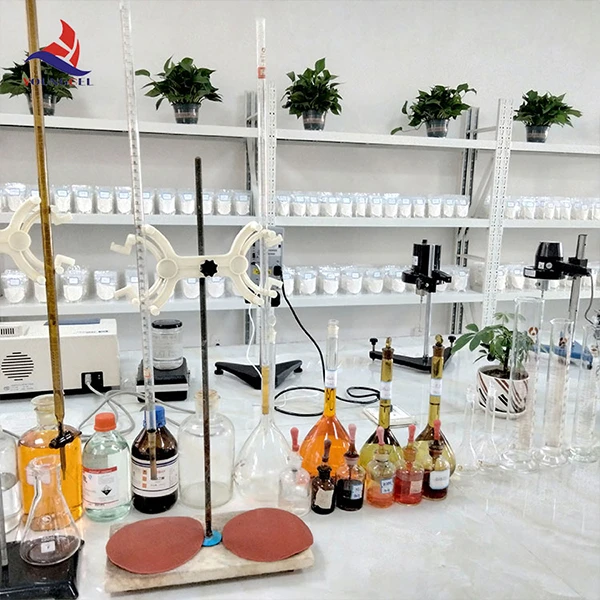HPMC Tile Adhesive A Comprehensive Overview
Tile adhesive is a crucial element in the world of construction and renovation, and it plays an essential role in ensuring that tiles are securely fixed in place. Among the various types of tile adhesive available in the market today, Hydroxypropyl Methylcellulose (HPMC) tile adhesive has gained significant popularity owing to its advantageous properties and versatility.
What is HPMC?
Hydroxypropyl Methylcellulose (HPMC) is a non-ionic cellulose ether, derived from natural cellulose through a series of chemical processes. This compound is widely used in various industries, including pharmaceuticals, food, and construction due to its unique characteristics. In the construction industry, HPMC is primarily valued for its excellent water retention ability, improved workability, and enhanced adhesion properties, making it an ideal additive in tile adhesives.
Advantages of HPMC Tile Adhesive
1. Water Retention One of the primary benefits of HPMC tile adhesive is its remarkable water retention capability. When mixed with water, HPMC forms a gel-like structure that prevents rapid evaporation. This characteristic ensures that the adhesive remains workable for a longer period, allowing ample time for the tile installation process, especially in hot and dry environments.
2. Enhanced Flexibility HPMC tile adhesive provides a certain degree of flexibility once it has cured. This flexibility is crucial in areas subjected to temperature fluctuations and mechanical stresses. It helps to absorb stresses caused by movements in the substrate or external factors, reducing the risk of cracking or tile detachment.
3. Improved Adhesion The presence of HPMC in tile adhesives enhances the adhesion properties, allowing tiles to be securely fixed on various substrates. Whether it’s ceramic, porcelain, glass, or natural stone, HPMC-based adhesives can accommodate different tile materials, making them a versatile choice for any tile-laying project.
hpmc tile adhesive

4. Ease of Application HPMC tile adhesive has excellent workability, making it easy to spread and manipulate during application. It helps in achieving a smooth finish and ensures that the adhesive covers the tile thoroughly, minimizing the chances of air pockets that could lead to tile failure.
5. Resistance to Sagging One of the challenges in tiling is the sagging of tiles, particularly when applied on vertical surfaces. HPMC provides thixotropic properties, which gives the adhesive body and prevents sagging, ensuring that tiles stay in place during installation.
Applications of HPMC Tile Adhesive
HPMC tile adhesives are widely used in various applications such as
- Floor Tiling Ideal for laying tiles on both residential and commercial floors. - Wall Tiling Perfect for vertical applications, including kitchens and bathrooms. - Wet Areas Suitable for areas exposed to moisture, such as swimming pools and shower stalls, due to its water-resistant properties. - Outdoor Applications HPMC tile adhesive can be used for outdoor tiling, providing resistance against weather conditions.
Conclusion
HPMC tile adhesive has revolutionized the way tiles are installed in modern construction. With its impressive properties such as water retention, enhanced flexibility, superior adhesion, ease of application, and resistance to sagging, it has become a favorite among professionals in the industry. Whether you are a contractor or a DIY enthusiast, using HPMC-based tile adhesives can significantly enhance the durability and appearance of your tiled surfaces. As the construction industry continues to evolve, HPMC tile adhesive will likely remain a fundamental component, contributing to the longevity and aesthetic appeal of tile installations. As always, it is essential to follow manufacturer guidelines for the best results, ensuring that every tiling project meets the highest standards of quality and performance.
-
Rdp Powder: Key Considerations for Wholesalers in the Building Materials IndustryNewsJul.08,2025
-
Key Considerations for Wholesalers: Navigating the World of Hpmc - Based ProductsNewsJul.08,2025
-
Hpmc Detergent: Key Considerations for WholesalersNewsJul.08,2025
-
Key Considerations for Wholesalers: China Hpmc For Tile Adhesive, Coating Additives, Concrete Additives, and MoreNewsJul.08,2025
-
Crucial Considerations for Wholesalers: Navigating the World of Construction MaterialsNewsJul.08,2025
-
Key Considerations for Wholesalers Sourcing Additive For Cement, Additive For Concrete, Additive For Putty from Additive Manufacturer Shijiazhuang Gaocheng District Yongfeng Cellulose Co., Ltd.NewsJul.08,2025




